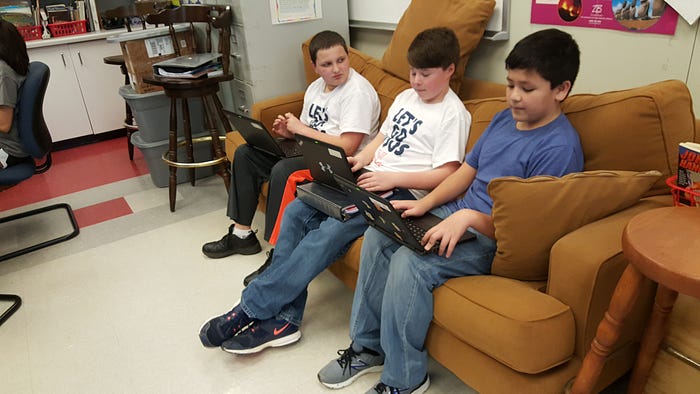Humans are, by their very nature, tool users and tool makers…
Speedchange.at.medium
I can trace a long history of my struggle with the definitions of technology.
When I taught at Michigan State I often challenged students to consider the technologies they’d need to move from Canarsie, in Brooklyn, to Turtle Bay (the UN area) in Manhattan. They’d respond with thoughts of their phones and subway apps… and I’d bring up roads, the rails themselves, shoes might help, and damn, if that bridge or tunnel didn’t beat swimming for it across the East River. “Technology,” I’d say quoting the Nazi philosopher Heidegger, “is the art of manipulating the world.” and maybe, specifically, your world.

So in the above image one of our high school students is playing the electric cello he just finished building in what’s basically a big garage for making, both “clean” technologies like programming and CAD and robots, and “messy” technology like table saws and drill presses and laser cutters and band saws. All that are technology, along with the furniture and the lights and the structure itself.

Our goal, in our 26 schools in the shadow of Virginia’s Blue Ridge Mountains, is to unleash our children and to surround them with an abundance of tools, ideas, resources, and support. Some of those tools are ancient, hammers and lathes. Some are laptops and the phones in their hands. Others range from books to 3D printers, from teachers who are master storytellers to a broadband network we are stretching to their homes, from calm comfortable places to think and relax to crowded noisy libraries filled with ideas.

Why? Because humans are almost defined as tool users and makers. What began to separate humans from Great Apes? The use of, the making of, tools. We remember our history through the tools we developed… the Stone Age, the Bronze Age, the Iron Age, the Age of Steam. And with those big names we forget that our information technology defines us as well. Books and access to information has been almost as costly as artificial light for most of human history. But in the mid 19th century as kerosene lamps finally extended the day into the night for most, machine made paper and steam-driven rotary presses produced cheap books and penny newspapers, then the telegraph, railroad and steamship sped the flow of information. So did steel nib pens, and an invention called the pencil, and blackboards, and slates for kids to write on.

And change is hard. In 1841 William Alcott needed 256 pages in one book, and a dozen journal articles, to help teachers figure out how to use those new blackboards and slates. 256 pages, yes.
But one thing is clear, our kids will always be ahead of us. And so whatever the technology, we try to have it. We’re one-to-one with real laptops the kids can make their own. We’re BYOD. We have everything from 3D printers and music studios and sewing machines and drones and laser cutters in our libraries. We try to be as Universal Design for Learning as copyright laws allow us to be. We let kids choose how to sit and what tech to use.

And then we coach and support and help kids get better and better at being tool users and tool makers… whether your tools are texts on paper and the words you string together, or the most sophisticated music programming software.
Because we’re educators, and it’s our job to help get our children ready for whatever their lives can be.
Anyway, my thoughts on this wonderful bit of thinking.
- Ira Socol
